Even though I had shared the review of the X-T20 back on Jan 14, 2017 – the two years gap has been pretty rewarding with the succession of releases of the Fujifilm X-E3, X-H1, X-T100, XF10 and of course the X-T3 bodies.
(click on model names for their reviews)

Introducing the X-T30, the only body after X-T3 equipped with Fujifilm’s latest X-Trans IV sensor.
Yes, the X-T30 presents the same image quality as the X-T3.
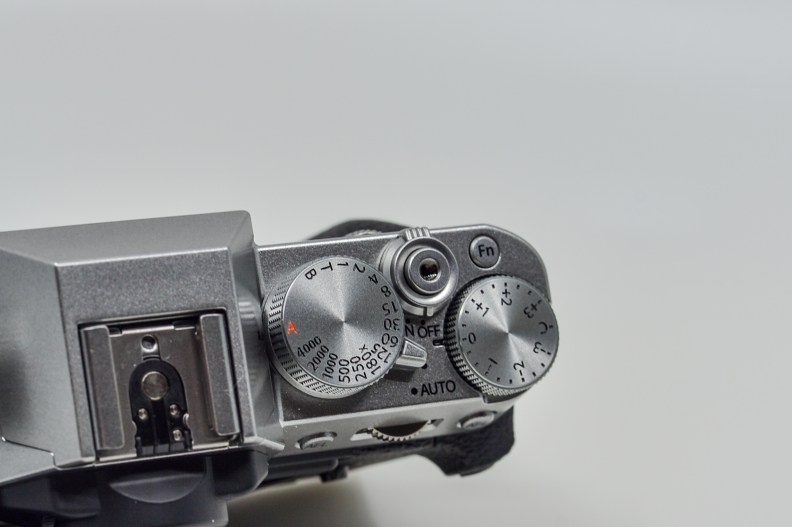
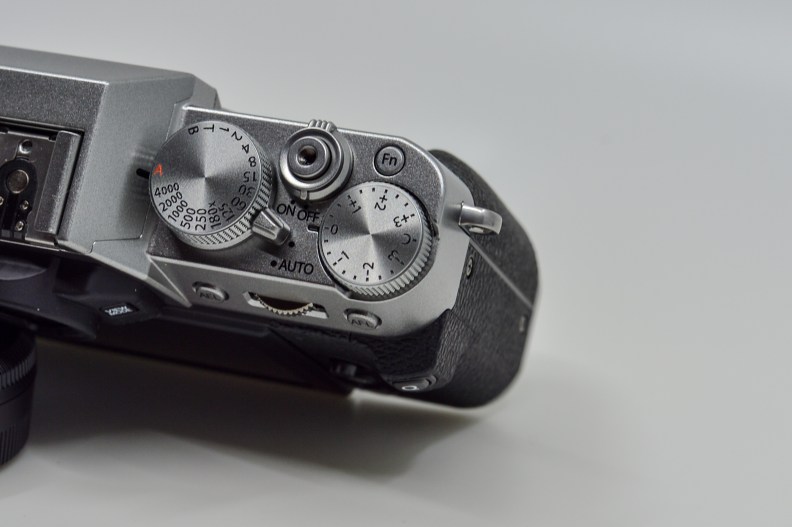
Build, Handling and Design
*note: I will include comparisons with the X-T3 as I go along as I am sure readers will be interested in these details.
The Fujifilm X-T30 design aligns with the design tenets of being the compact and lightweight camera body with an SLR-style viewfinder.
The X-T30 comes in at 118.4 x 82.8 x 46.8 mm (Fujifilm X-T20 comes in at 118.4 x 82.8 x 41.4 mm) and both are at the same light weight of 383 grams (including battery and memory card).
The design of the compact and lightweight body bears all the hallmarks of an X-Series camera. Both top and base plates are made of lightweight, but highly rigid, magnesium alloy.
The top plate features three precision-milled aluminum dials with a durable finish allowing users to easily adjust the aperture (can be set in menu onto back and front dials), shutter speed, exposure and shooting functions, all housed in a well-built body with little and basically no flex. One difference is to note here is the X-T30 goes up to 1/4000s for its mechanical shutter while the X-T3 does 1/8000s and both have electronic shutters going up to 1/32000s.
Contrasting with the X-T3, the X-T30 offers a less cluttered dial system with the removal of the ISO dial and only having 1 instead of 2 layered dials, and comes in less overwhelming to the beginner user.
And of course, not forgetting unique to the X-T30 and not the X-T3, the switch under the shutter speed dial to go from PASM modes into Fujifilm’s Auto (or Advanced SR+ Auto modes) allows beginner users to engage shooting with minimal fuss. This function alone can be a reason why some beginner enthusiast users will choose the X-T30 over the X-T3 series which has no auto mode.
A notable point here is the SR+ Auto mode in the X-T30 has been noticeably upgraded and is now much more responsive and smarter in recognising and applying the recommended settings.
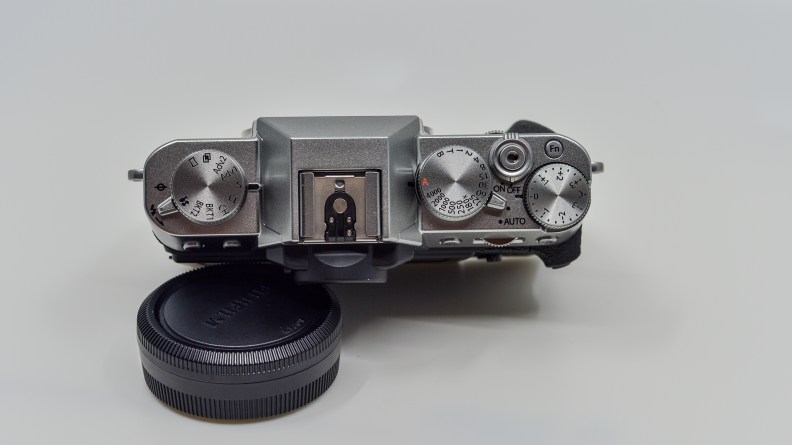
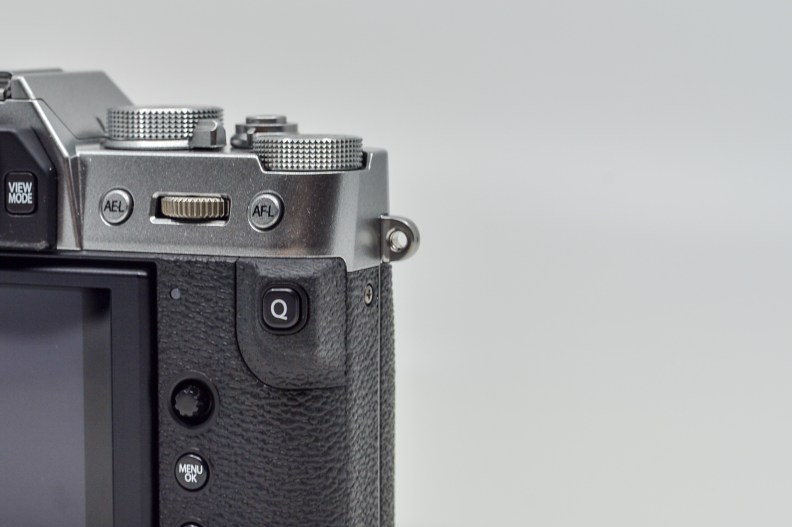
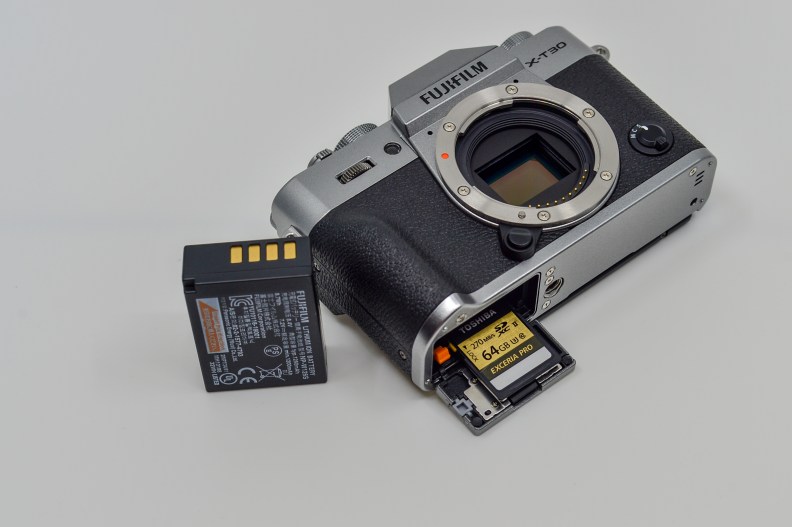
The X-T30 comes with a single SD-card slot that supports UHS-I and uses the same battery (NP-W126S) as it’s other X-siblings. Slightly shifted in position is the now ubiquitous ‘Q’ (for Quick) menu button on a redesigned thumb grip.
From the engineers, the X-T30 also has more efficient power consumption, giving up to 375 frames per charge instead of 350 frames per charge in the X-T3.
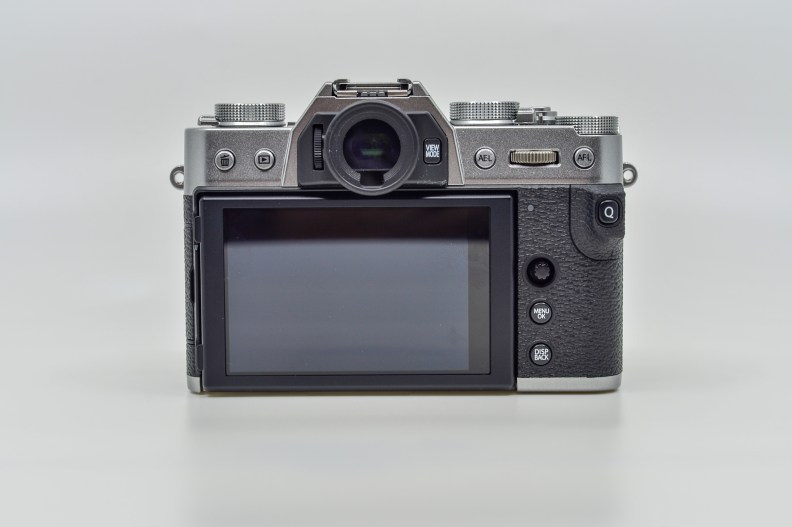
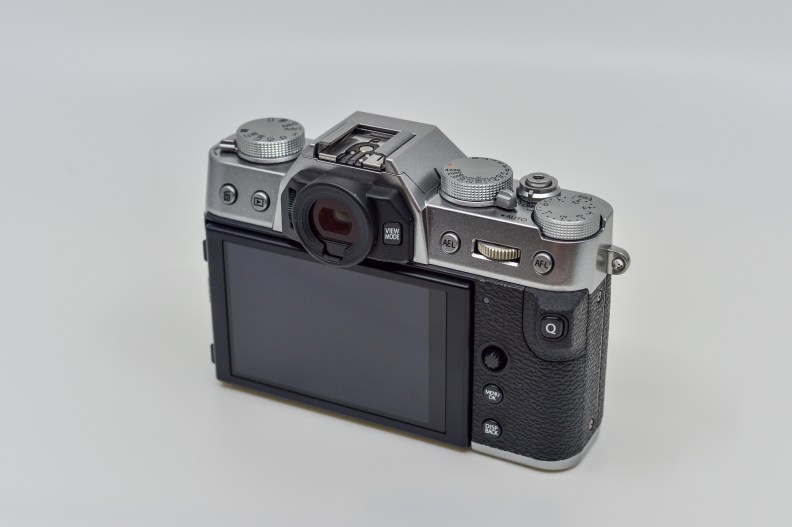
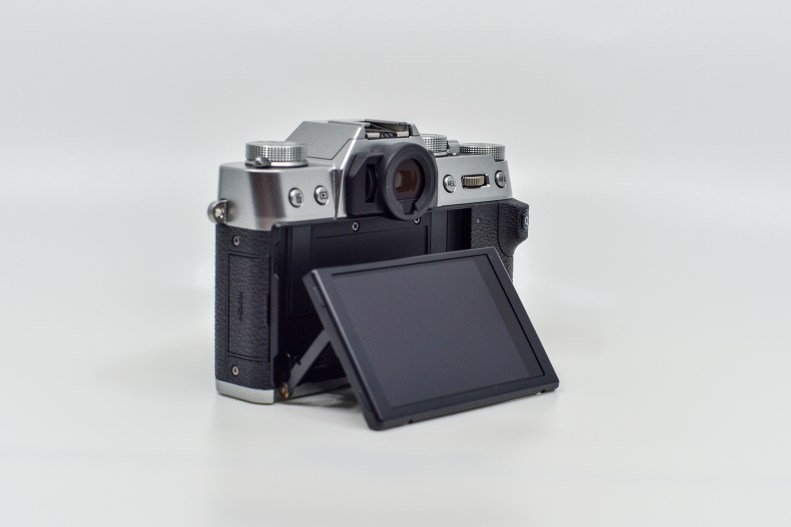
On the back, the electronic viewfinder comes in with a magnification of 0.62 times (X-T3’s is 0.75 times) and a 3 inch type 1.04 million dots touch panel tilt liquid crystal, both similar to the X-T20 sizes.
The X-T30 back now sports a cleaner design, populated by 7 buttons, a 5 direction joystick and a tilt-screen design that makes shooting at awkward angles easy.
The removal of the D-pad is little cause for worry with the the swipe functionalities on the touch-screen (it is a surprise that there’s a lot of users now still unclear that one can set in menu to swipe upwards/downwards/right and leftwards to access functions like the 4 way functionality of the D-pad).

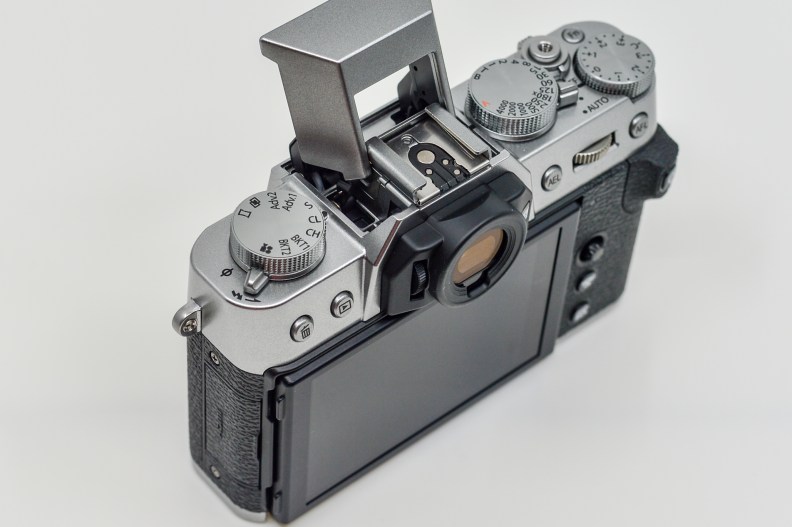
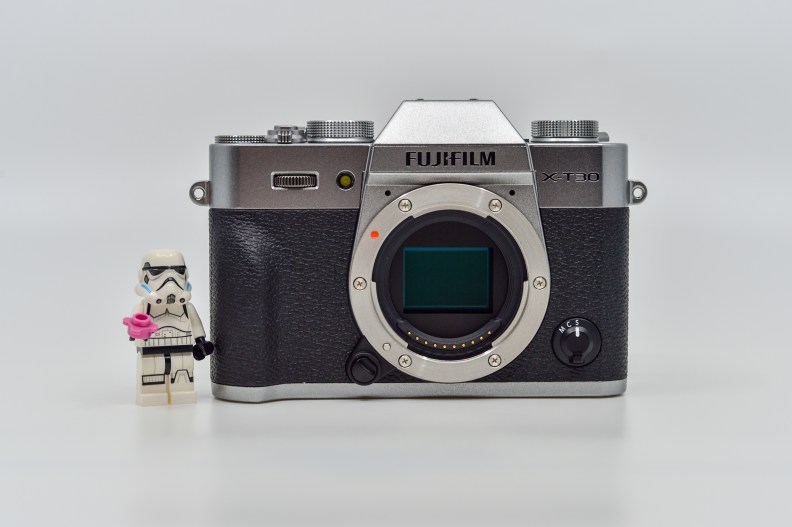
An advantage of the X-T20 over X-T2 is the built in flash and this function is still present for just that moment when you might need a flash in a jiffy.
Do note that the X-T30 houses the same 26.1 million pixel X-Trans CMOS 4 sensor and X-Processor Pro 4 of the X-T3 hence expect performance levels of continuous shooting of 8 frames per second (mechanical shutter) and blackout-free high-speed continuous shooting at speeds of up to 30 frames per second with a 1.25x crop, with AF points basically covering the full sensor area.
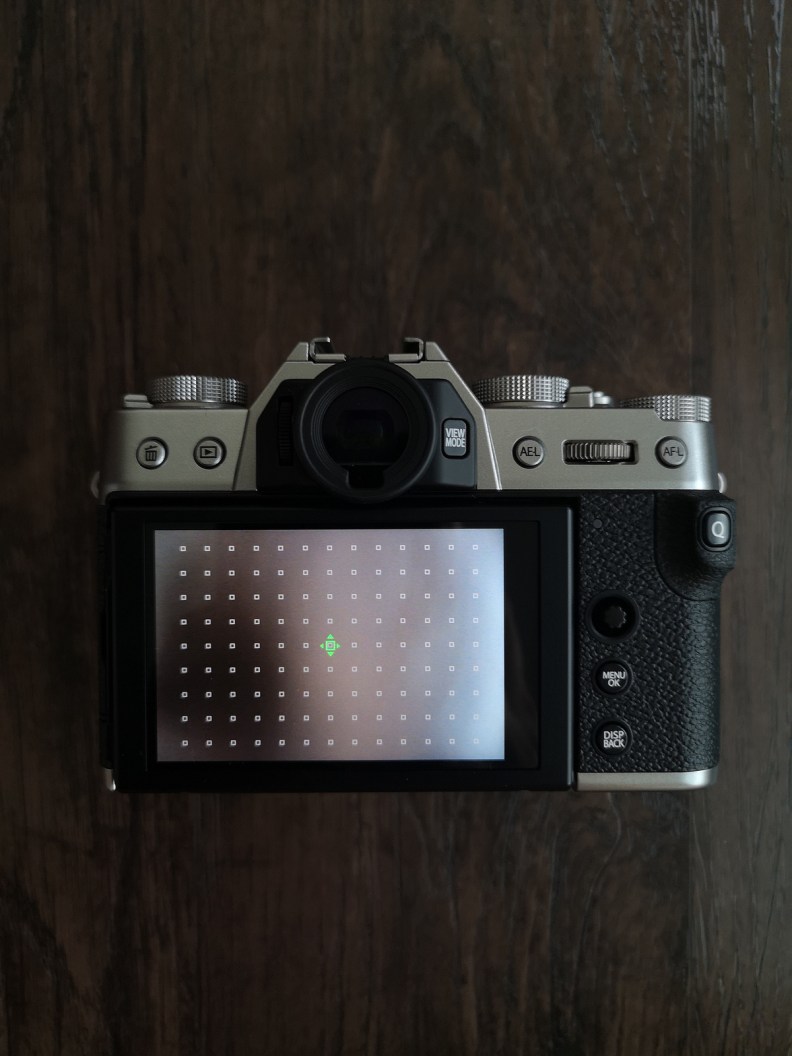
Being a X-Trans sensor based camera, the X-T30 comes equipped with 16 types of film simulation (including Eterna, Acros, and on) and does 4K/30p video while the X-T3 does 4K/60p video.
On the topic of video, the X-T30 does not have flog and maximum recording time is 10 minutes for 4k, unlike X-T3’s 30 minutes for 4k.
Firmware wise, expect the same firmware as the other X-series cameras which is the way it should be, allowing users ease of transition between bodies. This is one thing Fujifilm has done right in the last few camera releases.
There are enough differences shared along this post to actually differentiate the 2 models, with a next one being that the X-T3 has a much larger buffer than the X-T20. Shoot single shots one doesn’t feel any difference but do continuous high mode, one will soon see the difference.
For example the provided buffer goes as:
at 30 fps (1.25X Crop)
in JPEG 60 vs 26 shots
in RAW+JPEG 33 vs 17 shots
at 20 fps (no crop)
in JPEG 79 vs 32 shots
in RAW+JPEG 33 vs 17 shots
at 10 fps (1.25X crop)
in JPEG 500 vs 93 shots
in RAW+JPEG 37 vs 17 shots
for the X-T3 and X-T30 respectively.
And with the last significant difference of the support for a battery grip, I can simply surmise that the X-T30 while on paper to most readers is a X-T3 in a smaller package, the X-T3 is still the flagship model with more shooting flexibility and potential.
Visual differences between the X-T3 and X-T30
As always requested, here are some comparison photos of the X-T3 and the X-T30 (only these 2 models run the X-Trans IV sensor currently) and some lenses mounted on it for your reference.
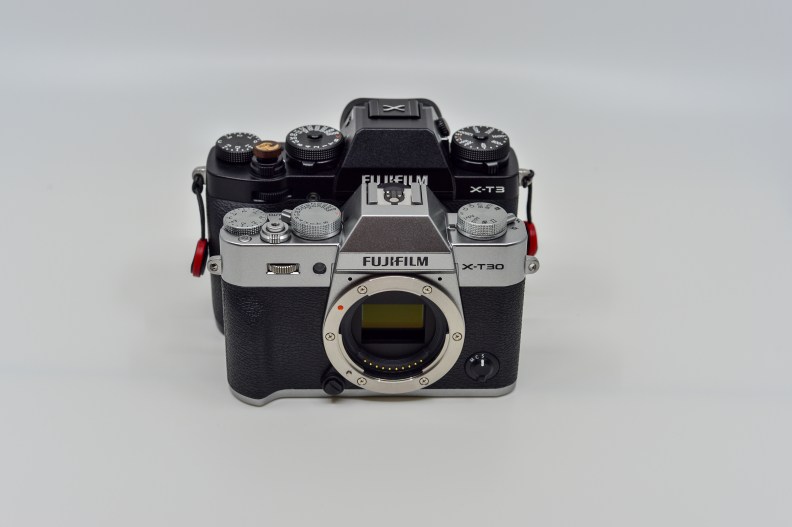
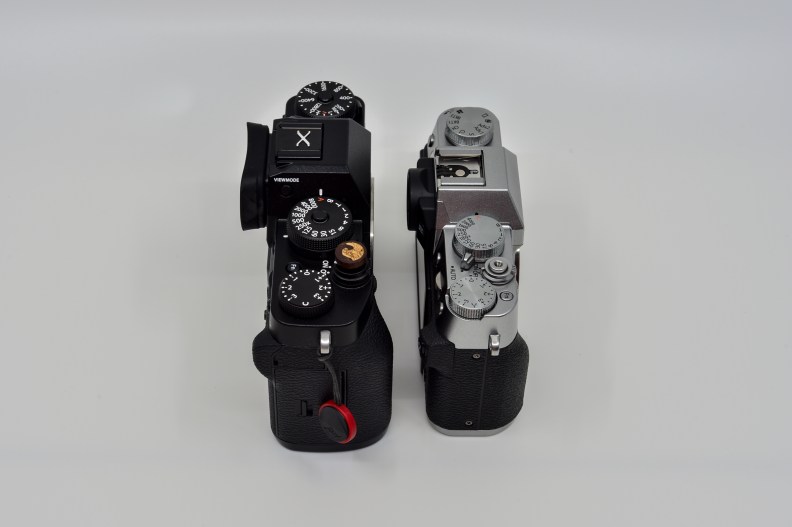
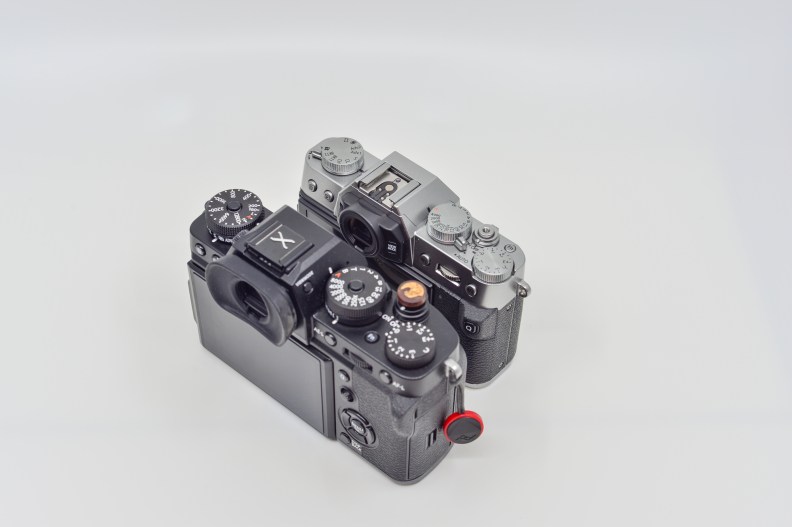
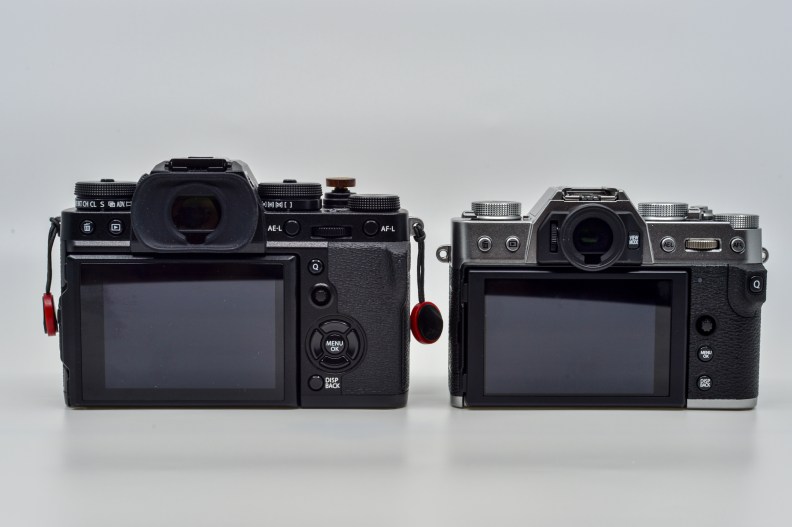
Visually it is obvious a key advantage of the X-T30 is its compact size, in fact this APSC sensor sized camera is smaller than quite a few Micro-four-thirds sensor sized camera bodies.
The X-T30 goes well with the smaller primes, especially the XF16mm f2.8, XF23mm f2, XF35mm f2. XF50mm f2 or even the XF35mm f1.4 and the XF18-55mm f2.8-4 lenses but move into the larger ones like the XF16-55mm f2.8, the XF100-400mm, or the XF90mm f2 and one will find the setup front-heavy due to the compactness of the camera body.
Image Samples
(note, you can find more samples taken with other lenses over at my X-T3 review since the X-T30 and X-T3 share identical sensors, link here)
before anything else, pls allow me to share my standard disclaimer.
1. This review X-T30 set was loaned from Fujifilm for lesser than a week and was returned at the end of the review period. I did not receive payment in any form for this review. I had the chance to shoot it for only a few days before the release of this review today.
2. This X-T30 in the review is a pre-production model and hence the final production model will only perform better.
3. All images shared are from JPEG and edited to my liking.
There is no raw support yet for X-T30 files in LR CC as of today.
4. All lenses used for the images were not loaned and belong to me.
5. I shoot my own product photos and the ones on this review were all shot with a Nikon Df and 50mm f1.4 setup. I have never liked the idea of doing a review with ‘borrowed’ official product photos.
and here we go!

 XF23mm f2
XF23mm f2
 XF16mm f2.8
XF16mm f2.8
 XF23mm f2
XF23mm f2
 XF23mm f2
XF23mm f2
 XF23mm f2
XF23mm f2
 XF23mm f2
XF23mm f2
 XF23mm f2
XF23mm f2
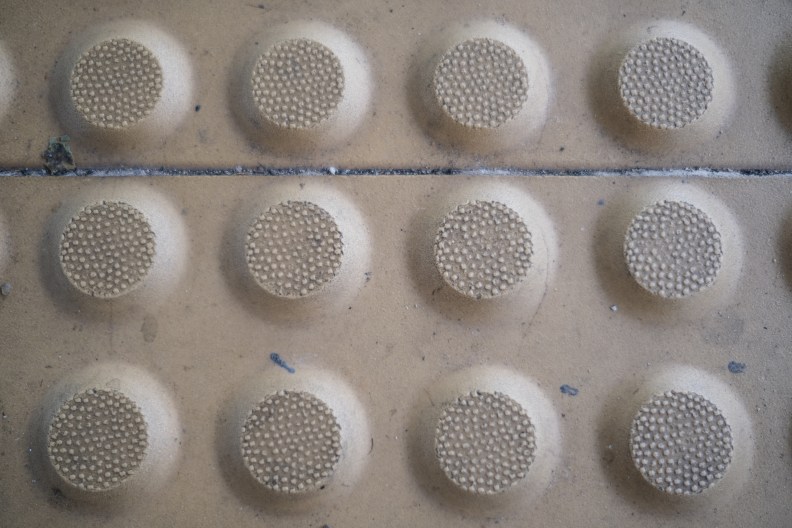
XF23mm f2



XF23mm f2

XF23mm f2
XF23mm f2 at 8fps, (mechanical shutter)
The tracking, eye and face detection worked extremely well even with capturing erratically moving subjects.
 XF16mm f2.8
XF16mm f2.8
 XF23mm f2
XF23mm f2


 XF23mm f2 (8 fps, mechanical shutter)
XF23mm f2 (8 fps, mechanical shutter)
 XF23mm f2
XF23mm f2
 XF16mm f2.8
XF16mm f2.8
Conclusion
Being an owner of the X-T3, I will gladly confess it is one of my favourite cameras with X-Trans IV providing the required leap forward for Fujifilm X-mount to be on par with the offerings from other competitor brands. (4K/60p, extended video and shooting options, much improved AF and eye-detection amongst many other key functionalities)
And the X-T30 Fujifilm has managed to distill many of these key features into a more compact and affordable camera that’s likely to hit the sweet spot for many photographers, especially hobbyists and beginners who will be happy with a trio of primes like the XF23mm f2, XF35mm f2, XF50mm f2 and the XF18-55mm zooms.
In a way, even with the differences between the X-T3, the Fujifilm X-T30 has all the features that a hobbyist or pro would need at a price that both will love. It is not often I see a camera that has this many professional features packed into such a versatile, functional and well-designed camera which I can even see some professional users considering as a second body.

Presenting the thinnest possible X-camera setup with the X-T30.
Thank you for reading.
















Hi there, been following you for quite a while now and I enjoy reading your posts. Just came off reading a number of your posts in a row, and I thought I should give you feedback on how you’ve confused the usage of ‘it’s’ vs ‘its’. The former is possessive whereas the latter is a contraction of ‘it is’.
An easy to way to remember is once we know this, and for cases where you use “it is”, we can expand it out to ‘it is’ and see if the sentence still makes sense.
An example from this particular post: “An advantage of the X-T20 over X-T2 back then is it’s built in flash and…” (In this case, using ‘it’s’ doesn’t make sense. Try reading the sentence with “it’s” read as “it is” and you’ll know what I mean. Therefore it should have been “its”, the possessive word.)
Another example from this post too: “its a surprise that there’s a lot of users now still unclear that one can set in menu…” (What you actually mean is to start off the sentence with “It is a surprise that…”, hence it should actually be the contraction of “it is”, which is ‘it’s’ in this case and not ‘its’.)
Hope I don’t come across as a grammar nazi or pedantic but I thought I should give you a heads up and correct you on the right usage, especially because I couldn’t help noticing the consistent error being made in a number of these posts 🙂
Cheers.
LikeLike
Hi there, thank you for paying the attention and I appreciate the advice 🙂
I’ll take better note of what your have kindly brought up and if time permits, I’ll make the amendments. Thank you.
LikeLike